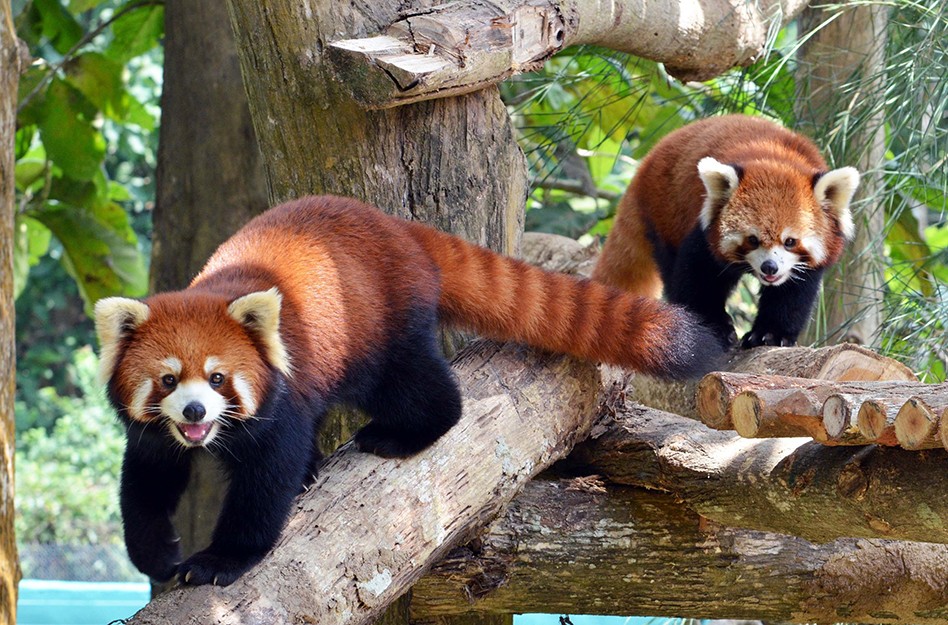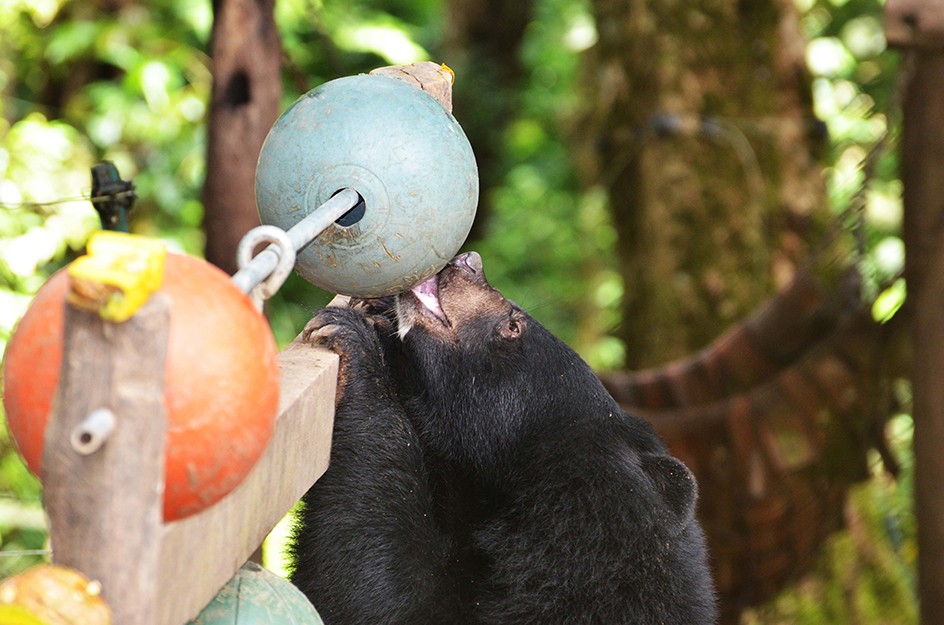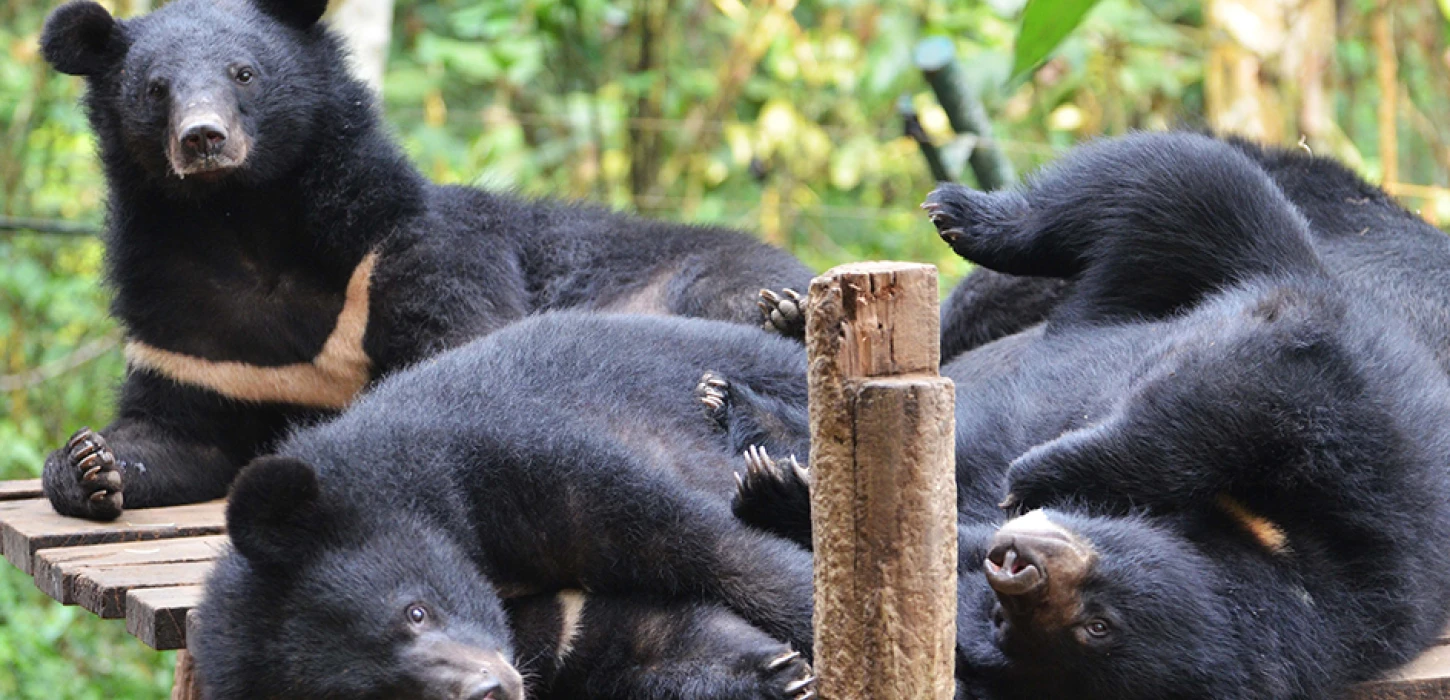帮助熊猫绝非小事。
我们大多数人与熊猫很少有交集。我们热爱小熊维尼,但对于老挝崎岖山脉中的熊类动物呢?
沿着通往Kouang Si瀑布的主要步道,游客们可以看到被救助的熊猫在“解救熊猫”塔古昂斯熊猫救援中心的森林围栏内进食、嬉戏和休息。游客可以了解残酷的熊胆交易,以及澳大利亚非营利慈善机构的历史和当前工作。解救熊猫(FTB)还为野生动物爱好者提供了与熊猫亲近的机会,通过“熊猫关怀之旅”(Bear Care Tour)来深入了解。熊猫关怀之旅为游客提供了更多了解照顾熊猫所需的机会。参与者可以了解个别熊猫的情况,然后通过制作丰富多彩的玩具和在森林围栏内藏食物来考验熊猫的觅食技巧。

成立于2003年,救援中心位于距离琅勃拉邦23公里之外。目前,救援中心养有30多只月熊,从幼崽到成年熊都有,它们都有着特有的胸前白色V形月牙标记,因此得名"月熊"。月熊,也被称为亚洲黑熊,在国际自然保护联盟(IUCN)的分类中被列为易危物种。在老挝,它们的数量受到熊胆养殖和非法野生动物贸易的威胁。熊胆养殖是一种残酷的做法,熊被终身关在狭小的笼子里,胆汁每天通过导管从胆囊中抽取。月熊也因其部分身体部位和传统药物而被捕杀,有些被用作“纪念品”宠物,或者被用于餐馆和商店以吸引游客。

FTB的老挝教育技术顾问尼基·布朗告诉我,所有庇护所里的动物都是从非法野生动物贸易中被拯救出来的。她告诉我:“老挝仍然有大约120只熊被关在非法熊胆养殖场,或者作为宠物。”老挝森林检查部门和FTB正在密切合作,试图终止这一做法。熊胆被用于传统药物,据称可以治疗各种疾病,包括疼痛、头痛、发烧、炎症、肝病和溶解胆结石,尽管没有科学证据支持这些说法。尼基说:“有许多更安全、更便宜、更有效的疗法可以选择,包括草药和非处方药。” 韩国、越南和中国人是熊胆的主要购买者,这些国家的新信息已经在Kouang Si印制,供这些国家的人阅读。然而,截至2019年11月,FTB已经拯救了17只熊,这是该慈善机构在老挝拯救行动中的纪录年份。
随着过去4年熊猫救援数量的增加,明显地,FTB需要在老挝扩展。2017年,琅勃拉邦野生动物庇护所(LPWS)开放。这个庇护所将容纳多达150只熊,还为其他被非法野生动物贸易影响的拯救和濒危物种提供设施,包括猕猴、豹猫、鸟类、

在了解了有关FTB及其在老挝的工作的所有信息后,尼基向我介绍了一些被拯救的熊猫。Moonie McGuinness的右脚受伤并且没有爪子;Bindi被发现被塞进摩托车后面的塑料管里;Brenda和Beryl是两个月大的幼崽,被警察从村民那里没收。
当我参加了“熊猫关怀之旅”时,我与尼基和团队一起准备并藏起食物在其中一个围栏里。我们将狗饼干、葵花籽和花生包裹在大叶子里,用茎紧紧固定,然后将它们藏在围栏周围。
然后,我们从一个俯瞰院子的平台上目睹了熊猫们的狂食,看着它们跌跌撞撞地寻找充满营养的叶子球零食,我们大笑不已。熊猫站了起来,摇晃着竹竿以拿下食物,然后迅速爬上平台寻找南瓜、防风草和甘薯。
“熊猫关怀之旅”是我在琅勃拉邦逗留期间强烈推荐的体验,其中100%的费用将有助于FTB继续进行其拯救东南亚非法被养为宠物或在熊胆养殖场中的熊猫的重要工作,以及帮助照顾目前在他们的照顾下的熊猫。
抵达方式
老挝航空公司每天都有飞往琅勃拉邦的航班。塔古昂斯熊猫救援中心位于城市西南约30公里处,靠近Kouang Si瀑布。
更多信息
要了解有关“熊猫关怀之旅”的更多信息并进行预订,请访问freethebears.org/pages/bear-care-tour-laos。
文稿作者:克莱尔·布比尔
照片提供:Free the Bears


